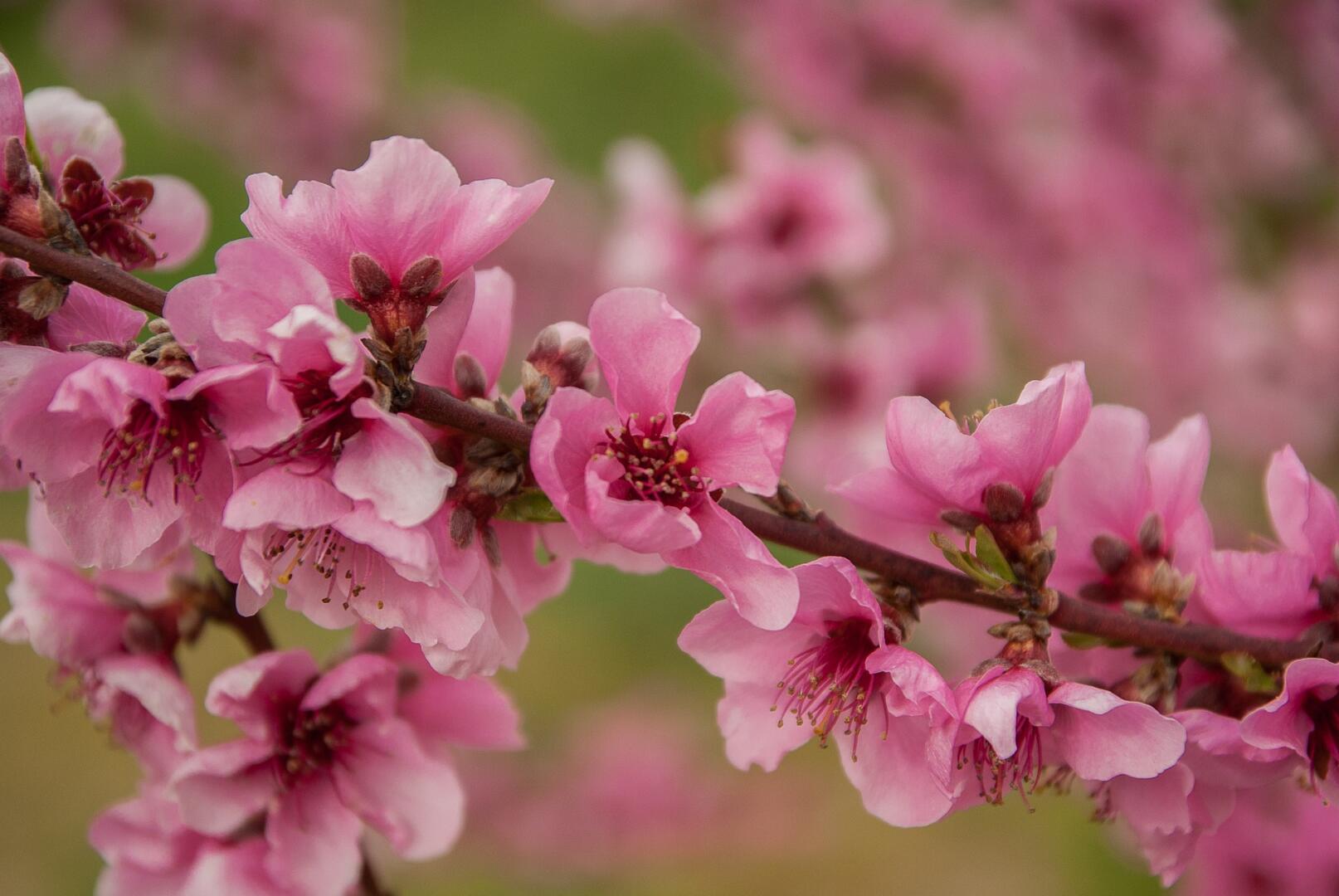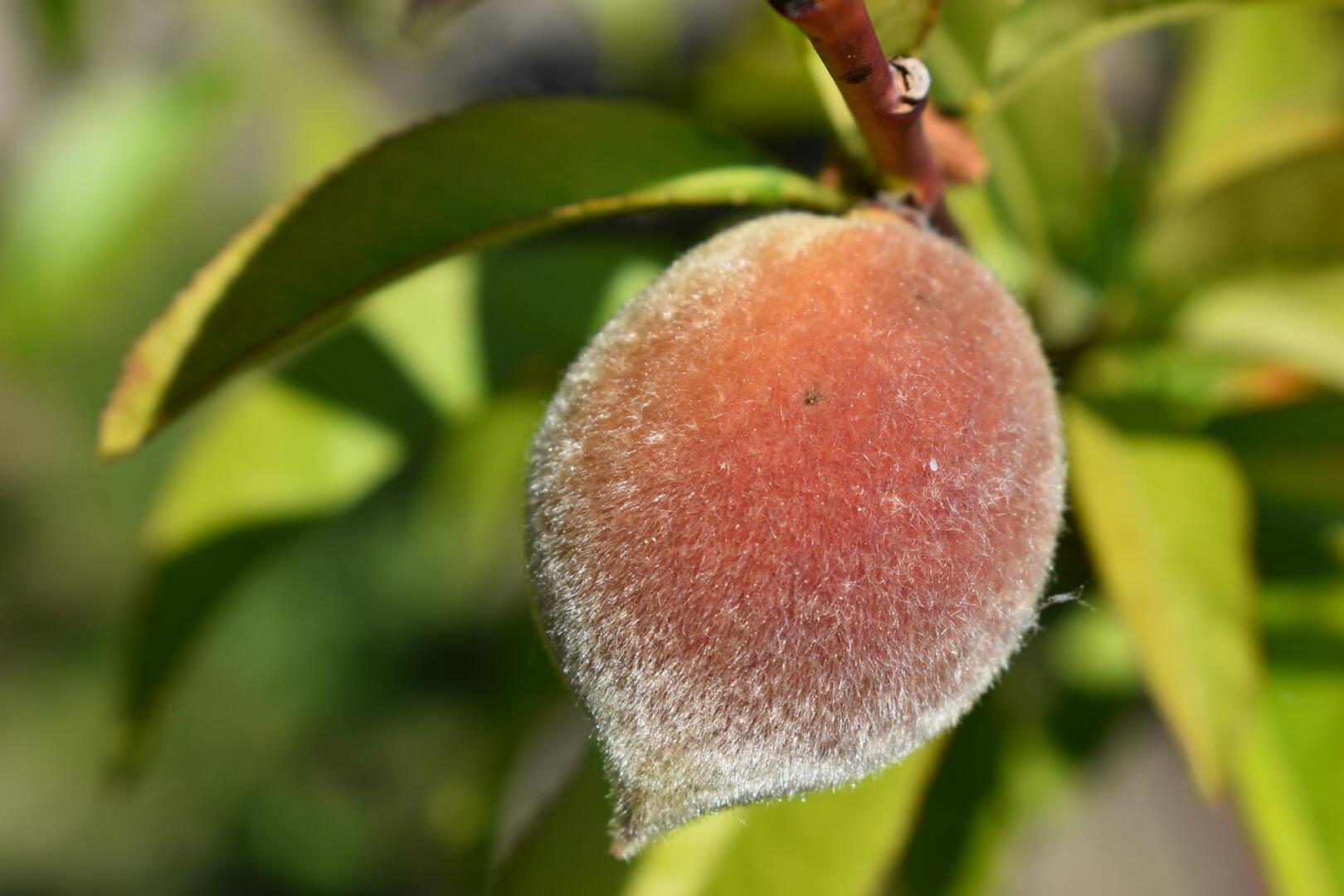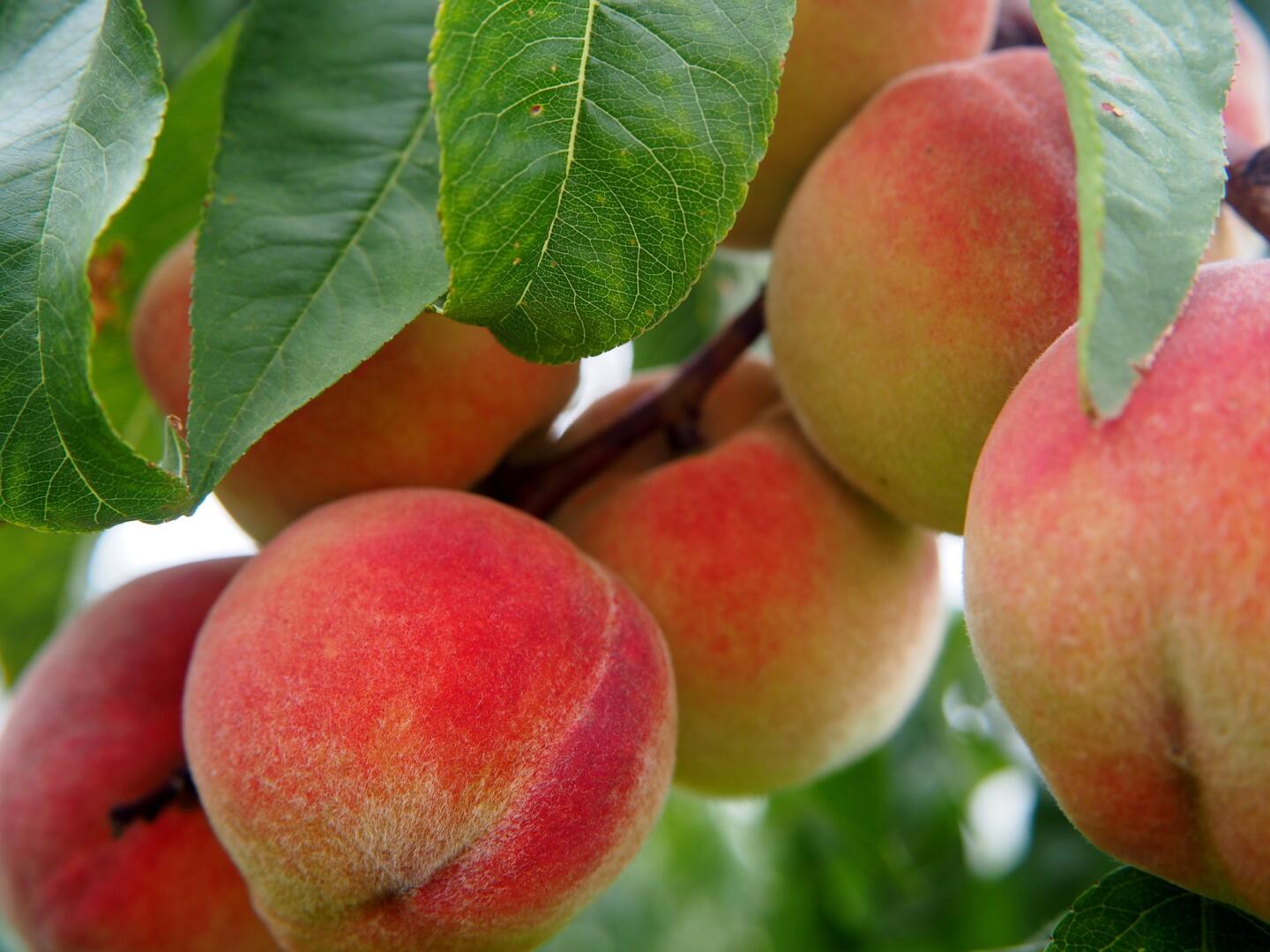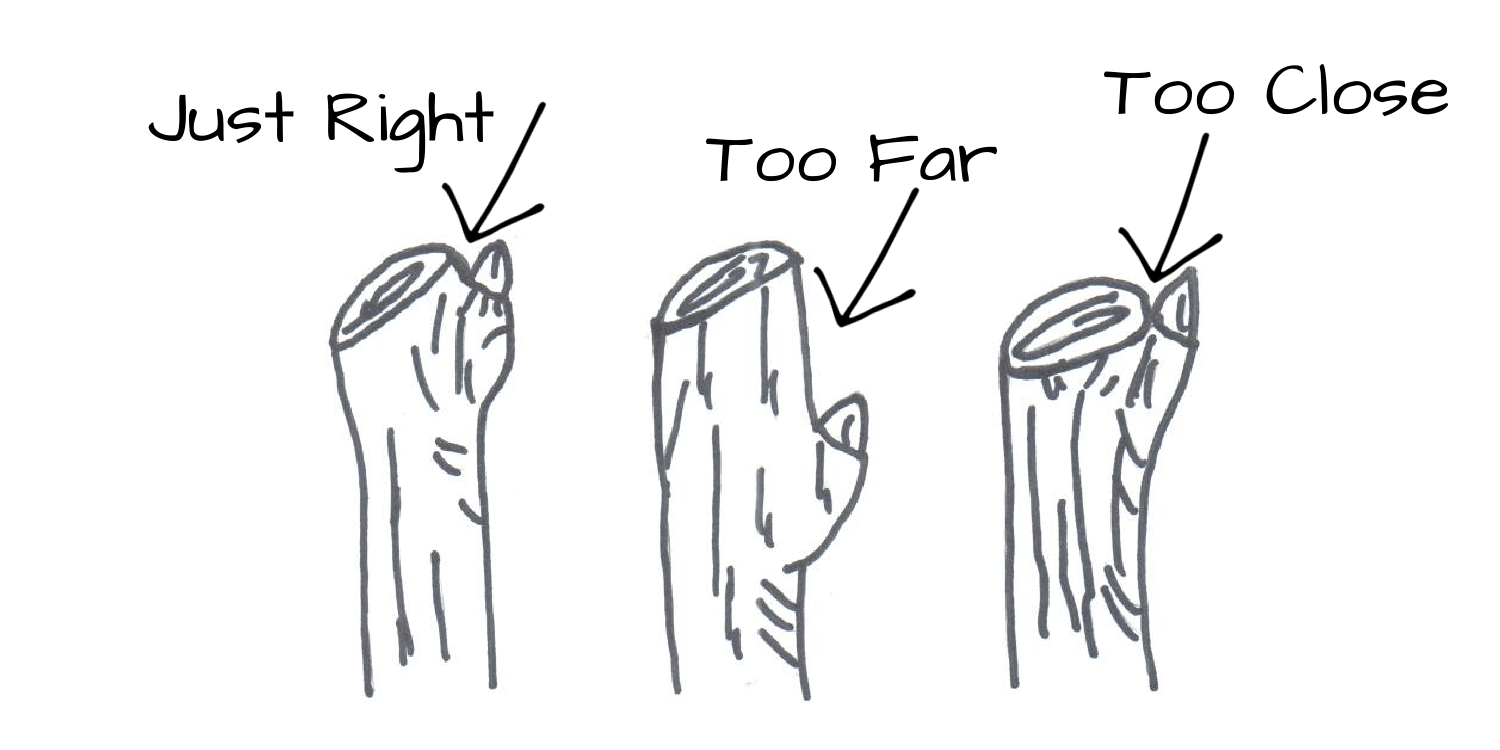Peaches are a deliciously sweet, juicy fruit with a delicate aroma and velvety skin. They are prized for their fresh flavor and are used in recipes for pies, preserves and cobblers.
When Planting Edibles, Always Start with a Plan:
Step 1: Comprise a wish list of plants.
Step 2: Experiment – Try something new!
Step 3: Know your land and location – Sunlight, space, and soil conditions.
Step 4: Growing methods – Raised beds, traditional rows, or containers?
Step 5: Choose your fruit – Start with trees, then berries and vegetables.
There is nothing more scrumptious than eating fruit harvested from your own crop, and your success begins with the planting site and method you use.
When you purchase your fruit trees from Herbein’s Garden Center, they should already be acclimated to our temperatures. If, however, you mail-order a plant, be sure to place them in a sheltered, shady area and gradually increase its time outdoors by 1-2 hours a day. After about 7 days, your plants should be ready to transplant into the ground.
BEFORE planting, consider these 3 things when planning your home orchard:
- Cross-pollination
- Sun and soil
- Surrounding area
- Space for future plants
Cross-pollination
Most peach trees are self-fruiting, meaning they will produce fruit without the need of a different variety of tree. However, when another variety is present, you will notice a higher fruit yield. Because insects and wind carry the pollen between the blossoms, you should have the peach trees planted within 50’ of one another.
Plant in full sun (at least 6-8 hours) and well-draining fertile soil. Light is critical to fruit production and fruit quality and helps minimize fungal problems.
Well-draining soil will keep your peach tree’s roots healthy which is the foundation of a healthy tree. If necessary, add soil amendments to heavy or fast-draining soils. Add coco fiber potting medium or 1/3 peat to the soil at planting time. Fruit trees can be very adaptable and respond well to soil additives such as compost or fertilizers.
Check your soils pH before you dig. You can purchase a Penn State Soil Test Kit from us or a meter for a quick result. Peach trees need a soil pH between 6.0 – 7.0. Use Espoma Organic Garden Lime if your soil’s pH is too low, or Espoma Organic Soil Acidifier if the soil’s pH is too high.
Surroundings
Check for any wires, cables, underground utilities, or any other obstructions that could be a problem when your tree reaches full maturity. Once your tree is planted and is stable, it can be a difficult task to transplant later. If you start off by planting your fruit trees at the proper spacing, you can avoid any problems or issues in the future.
Spacing
If you are new to planting fruit trees. it is best to start with just a few trees and add more later. Plan where you would possibly plant future trees and be sure you have adequate space for them. Always err on the safe side and leave room, you’ll be glad you did!
Space Between Peach Trees
- Dwarf: 8-10’
- Standard: 18-20’
- Columnar: 2-3’
- Miniature: 4-6’
*Most peach trees that we carry are dwarf varieties, but always check the tree’s tag for information.
Preparing Your Soil
Roots will grow faster if they are in soil that is loosened and has enough room to spread. Dig your hole deep and wide enough so the root system has room to expand. If the soil needs loosened up, mix aged cow manure, peat, coco coir or compost (up to 1/3 concentration) into the pile of soil you dig from the hole. Use this to backfill and cover the plant’s root system.
Adding organic matter will improve just about any type of soil condition by helping retain moisture and nutrients and break apart clay soils so that water can penetrate through and roots can spread.
The goal of soil prep is to give your fruit tree a strong foundation, the best chance for survival, and to yield an abundance of fruit, as well as breaking up and adding nutritious organic matter. Replenishing nutrients and minerals that get used from the soil is an important process for the overall health of your tree.
Planting
- Once you get your fruit tree home, if you cannot plant it right away, you will need to keep the roots hydrated, however, do NOT place in a bucket of water as this might cause root rot or even kill the tree.
- Dig a hole deep and wide enough to accommodate its current root system and have plenty of room for the roots to spread out.
- Gently pull the tree from its pot and loosen the roots. Place the tree in the hole with roots down.
- Add Espoma Organic Bio-tone to the soil you use to backfill. This will help to produce a large root system and minimize stress on the plant. It will also help to ensure that your new planting gets maximum water and nutrients from the soil to minimize transplant loss.
- Create a rim of soil around the planting hole about 2” above the ground level. This will allow water to stop and soak into the ground surrounding your newly planted fruit tree. In fall, level out this hill of soil to prevent water from ponding and freezing around your tree.
- At this point, remove any tags that are on your tree. If not removed, it could become tight and cause injury or be fatal to your tree. If you want to keep the tag with your tree, replace it with a loose piece of twine that you can keep an eye on as the tree grows and loosen as needed.
- Water thoroughly with a deep, slow soaking. If the soil settles, add more soil until it is ground level.
- This is a good time to stake your tree to help keep it straight.
- If you are planting your fruit tree in the fall, wait until spring to apply any fertilizers.
- Adding a layer of mulch around your tree will help keep rodents out, discourage weed growth, and keep water from evaporating at a quick rate. Add another layer of mulch in the fall for extra protection during winter months.
When to Fertilize
Peach trees thrive from macronutrients that are present in the soil. You will need to fertilize but be sure that you do not over-fertilize which could affect fruit production and leave the tree susceptible to pests and disease. Signs of macronutrient deficiency in peach trees include reddish or pale colored leaves, narrow or shrunken leaves and dead spots on leaves. In general, fruit trees need a well-rounded fertilization plan to help them produce to their maximum capabilities.
Micronutrients are also needed in the soil. These include copper and zinc that help prevent color mottling and misshapen leaves, and calcium that helps to improve leaf and fruit quality. The easiest way to add micronutrients is by adding aged compost or a balanced fruit tree fertilizer that states micronutrients are in the formula.
Typically, fertilizers are used during the growing season and not after July 1st. After your fruit tree starts bearing fruit, their uptake of Nitrogen increases. In response to this, an application of high-nitrogen fertilizer is recommended once in early spring.
Use Espoma Organic Tree-tone fertilizer to provide your tree with Nitrogen (for leaf and branch growth), Phosphorous (for root and blossom development), and Potassium (for the tree’s natural disease-resistance and overall health).
Here is an easy way to remember what the (# – # – #) stands for on packaged fertilizers = Up↑ leaf & branch growth – Down↓ root growth – All Around⸨⸩ overall health.
Pests & Disease Control
Peach trees may experience pest or disease problems during growth. Factors like location and weather will play a role in which issues your fruit tree will encounter. Practicing proper maintenance on your fruit tree such as watering, fertilizing, pruning, spraying, weeding, and cleanup will help keep most issues at bay.
Below is a list of pests that have been known to make an appearance on peach trees.
Aphids Oriental Fruit Moth
Borer Plum Curculio
Fall Webworm Scale
Leafroller Tarnished Plant Bug
Lygus Bug/Stink Bug Tent Caterpillar
Nematodes Thrips
Below is a list of diseases known to infect peach trees.
Anthracnose Phytophora Root Rot/Crown Rot
Armillaria Root Rot Powdery Mildew
Brown Rot Rust
Canker (Bacterial & Cytospora) Scab
Crown Gall Shot Hole Blight
Peach Leaf Curl
Grab our brochures Pest & Disease Control for Edibles” for more in-depth info.
Pruning is essential for proper development of fruit tree growth.
Pruning vs. No Pruning
It is in the best interest of your peach tree to do some pruning versus none at all. If left unpruned, your peach tree may not produce fruit, grow as well, or may not grow at all.
- Plan on pruning your peach tree every year during its dormant season, in late winter. This stimulates stronger and more vigorous growth from the remaining buds and provides a structured shape.
- Make sharp, clean slanted cuts about a ¼” away from the next OUTWARD pointing bud so you don’t leave a messy stub that won’t heal over. Cutting just above the outward bud will help new growth to take on a spreading shape which keeps the inner area open to air circulation and light.
Shape and Structure
Prune your peach tree to an “Open Center” shape. An open-center structure keeps the canopy open to light, which is necessary for the development of good fruit and helps prevent brown rot.
- First dormant season pruning – A year after you plant your tree, remove the central leader and direct the growth to three or four strong scaffolds, choosing branches that are evenly distributed around the trunk. Keep 6” of height between these scaffolds with the lowest branch at least 18” from the ground. Leave some smaller branches on the lower trunk to encourage trunk strength. Prune back scaffold branches to 1/3 of their length.
- Second dormant season – Prune away fast-growing new shoots but leave twig growth, which will be the fruit-bearing wood. Choose and encourage additional scaffold branches if needed.
- Third dormant season – Prune off any broken limbs or crossing branches but do not do any major trimming until your fruit tree has produced a good-sized crop.
- Mature-tree pruning – Once the basic shape of the tree has been established, make your pruning in line with the branches that are bearing fruit. Each year cut back each of last year’s stems to half its length.
Pruning Whips
Whips are unbranched trees, which are ideal if you want more control over which branches can develop, such as an espalier type. Prune whips back to about 28-36” above the ground at the time of planting. After new branches have grown 3-5”, pick a shoot that will be the leader and the rest become the tree’s scaffold limbs.
Sometimes off-season pruning is necessary. This could be damaged branches broken by wind, diseased branches, or branches cracked by the heavy load of fruit. Fast-growing tree suckers and sprouts should be removed as soon as you notice them.
Fruit Thinning
Thinning fruit can be done by hand in home orchards. In May and June, many peach trees will start to drop fruit in a natural process that allows the tree to mature the remaining crop. If not corrected through thinning, peach trees could only produce biennially or perhaps light one year and heavy the next. The best time to thin peach trees is within 20-40 days of full bloom. Thinned out fruit should be about 6-10” apart on the branch. When there are clusters, leave the center bloom so it develops into a large fruit.
Spraying Nectarine Trees
A well-rounded and consistent spray plan can be significant to the survival of your peach tree and can prevent potential problematic issues.
General Preventative Maintenance:
When to spray:
- Dormant Season (late winter/early spring, before bud break)
- Growing Season – Bud Break (emergence of new growth)
- Growing Season – After Blossom (after petals drop*)
*gives bees and other beneficials the time to safely pollinate the blossoms.
Pest Controls:
Bonide® All Seasons® Dormant Oil Spray
Bonide® Captain Jack’s™ Deadbug Brew Garden Dust
Bonide® Insecticidal Soap
Bonide® Thuricide® BT
GardenTech® Sevin® Bug Killer
Disease Controls
Bonide® Captan Fruit & Ornamental
Bonide® Fung-onil™ Fungicide
Bonide® Fung-onil™ Fungicide
Combination Sprays
Bonide® Citrus, Fruit & Nut Spray
Bonide® Fruit Tree Spray
Bonide® Neem Oil
Watering
Unless you planted your peach trees in an area where you would water your plants for “normal” plant growth, you probably will not need to water after the first growing season. However, do not forget to water directly after planting at your site. Also, here is another reminder to level out the soil berm around the trunk before winter begins.
Harvesting
When to Harvest
Peaches are ripe when there is no trace of green and their distinguishing color is fully developed. A ripe peach will have a sweet smell and a little give when you squeeze it. Harvest season is from late June through August, depending on the variety.
- After determining that your fruit is ripe, gently grasp the peach (careful not to bruise it) and give it a twist and tug away from the branch. A ripe peach will break free easily.
Store at room temperature, however, peaches will keep for a few days in the refrigerator.




